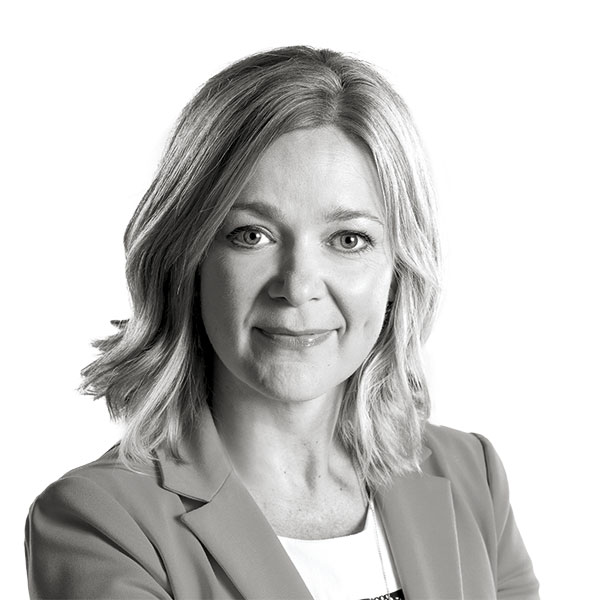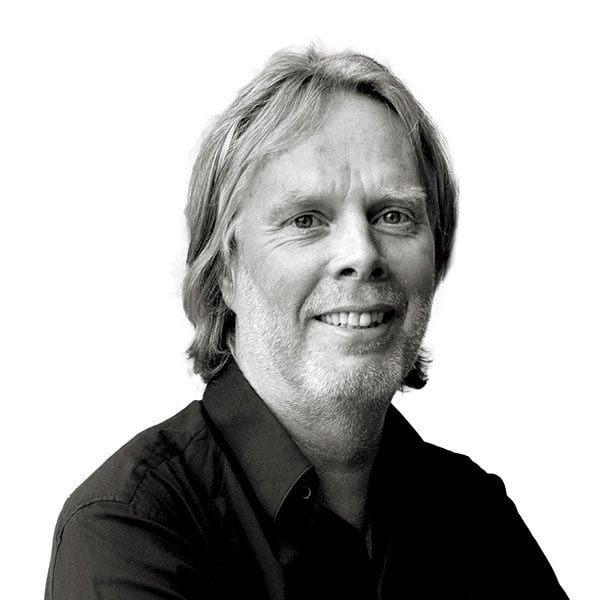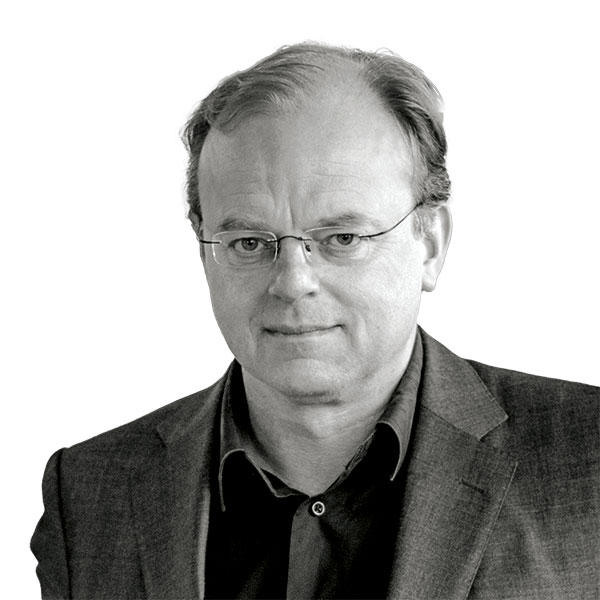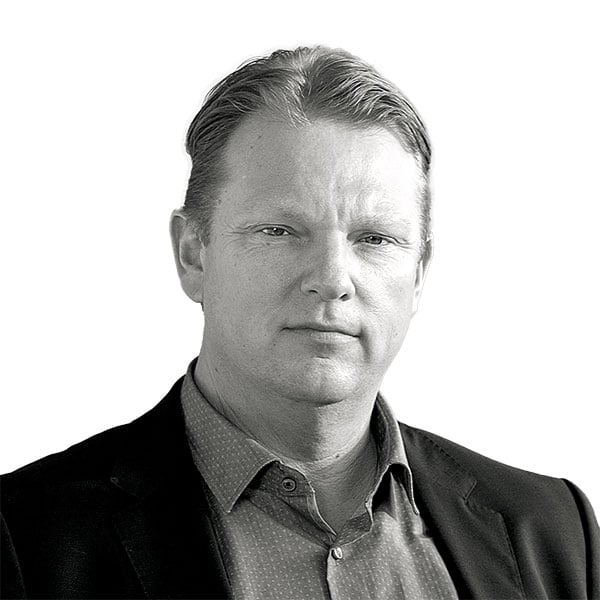‘The use of firearms cannot be ruled out’
Journalists are increasingly the target of orchestrated online campaigns. And reach beyond the digital world.

Brian Farrell
Editor-in-chief Sunday World
“Police are in receipt of information that criminal elements have been monitoring the movements of Steven Moore with a view to some form of violent attack. This may be related to Mr. Moore’s reporting in the press. The use of firearms cannot be ruled out.” - The Police Service of Northern Ireland (PSNI).
This is the chilling warning given to Sunday World journalist Steven Moore on 9 June 2022.
Two police officers called to the door of his home, where he lives with his wife and young family, to alert him to a “credible threat” from a loyalist paramilitary drugs gang.
The threat was shocking, but the subsequent social media campaign – orchestrated by criminal elements – was equally concerning.
Their Facebook and Twitter posts suggested that certain sections of the media “had been falsifying threats against themselves” and were not to be taken seriously.
The tone and manner of the campaign sought to discredit the important, investigative work undertaken by many of our journalists – and turn right-thinking members of the community against the “mainstream media”.
Since the Covid-19 pandemic, we have seen a sharp rise in orchestrated online attacks against the media – most notably by those seeking to spread disinformation on topics relating to health, government, and justice.
This faceless mob has moved from one controversy to the next – where once their cause was anti-vax, it has now become an anti-immigration message, leading to many of our writers becoming a lightning rod for their ire.
Mediahuis Ireland has played a significant role in highlighting the constant threats to our journalists and has sought to form a partnership with law enforcement and government on both sides of the Irish border to protect the freedom of speech and the integrity of our work.
While the proposed programmes are in their infancy, the aim is clear – threats to journalists via social media or other methods must not and will not be tolerated.
The Fourth Estate is even more vital now than it has ever been, and we must be protected.
‘We know where you live’
Local journalists know all about threats. The protagonists of their stories know how to find them. And death threats have become common.

Indra Dewitte
Editor-in-chief Het Belang van Limburg
Donald Trump’s misdeeds, the Covid pandemic, the war in Ukraine… If major world events in recent years have taught us one thing, it’s the importance of our press freedom. And there’s no press freedom without press safety, on that everyone agrees. It’s a hot topic everywhere. For journalists, but equally for media companies, publishers, TV stations and, of course, politicians.
But there’s some friction here. Press safety is usually only talked about in the narrow context of the dangers faced by war correspondents. And that completely ignores the reality of journalism in general, and regional journalism in particular. While only a small percentage of our people actually go to the frontline, many of them find themselves in a threatening situation every day, in their own backyard. And that makes sense. It’s not rocket science that the closer you are to your subject, the more vulnerable you make yourself. After all, the bad guys know where you live.
For example, Roel, one of our reporters at HBVLOnderzoekt, carried out a serious investigation into the illegal dog trade. Make no mistake: the kind of money involved here rivals that of the drug lords. That explains why, a few days after publication, he was not only sued for €650,000 but also received several death threats to his family over the phone. A day later, he was physically threatened. When he went to the bakery one Saturday morning, a Hells Angel with two American Staffies was waiting for him. He was to drop the investigation, the aggressor told him.
Or how about the experience of Mark, Thomas and Hanne, who revealed the scandal surrounding a Limburg mayor guilty of queue-jumping during the pandemic. They were blatantly pressurised for several weeks by the mayor’s entourage. And no, that wasn’t a pleasant experience. They were dragged through the mud on social media, they received threatening phone calls and their friends were targeted too. Fortunately, our journalists are experienced battlers, who aren’t easily deterred. But it gets into your head, especially when your family is dragged into that culture of fear.
So, a plea to broaden our view of press safety is really needed. The true hero is the journalist on the street, looking around their community and seeing what stories need to be told, regardless of the threat. And yes: the dog traders backed off, albeit briefly. The mayor was shown the door. And Roel, Thomas, Mark and Hanne? They’re still out on the streets of their patch, doing their jobs.
‘We don’t talk to rats’
Secured houses, deflated tyres and intimidation by interviewees – sadly, that’s no longer news.

Evert van Dijk
Editor-in-chief Dagblad van het Noorden
What can I say about press freedom that Willem Groeneveld hasn’t already said? The face of the city blog Sikkom has shared his impressive victim impact statement elsewhere in this annual report. Not only was he frequently threatened, not only was he the victim of doxing, he and his girlfriend suffered a serious attack in their own home. It’s really only down to luck that they survived to tell their story.
I have nothing to add to his statement. Instead, I could talk about a journalist at Dagblad van het Noorden whose house has had to be secured, just like Willem’s. But we won’t talk about security, not here. What about Eelco Kuiken, a reporter in Staphorst who knows the place and the people like the back of his hand. Things got out of hand at a farmers’ protest in late November. He wanted to ask questions, but the protesters reacted aggressively. “We don’t talk to rats,” they told him. When he later went to leave, he found three of his car’s four tyres were flat. He wasn’t impressed. The tyres may have been flat, but they weren’t empty, and he didn’t feel physically threatened.
One of his colleagues, Carleen de Jong, was more affected after visiting a fishmonger in Lauwersoog. She wanted to follow up on the news that he was quitting his business after more than 30 years. The report hadn’t gone down well with him and he had reacted furiously over the phone. So she went to speak to him.
He didn’t like that either. He refused to let her publish anything and told her at length all that was wrong with Dagblad van het Noorden. Carleen thought that was a good time to leave. She grabbed her phone, which the man mistakenly interpreted as proof she’d recorded the conversation. Pushing and shoving followed, and he took photos of her.
It led to a complaint about an “unwelcome journalist” and a report to the police. We filed our own report with the PersVeilig safety initiative, and as editor-in-chief I expressed my disapproval to the fishmonger. I don’t get the impression that we’re making much headway with press freedom, frankly. It’s a work in progress, including in the Northern Netherlands.
The tone is getting grimmer
Journalists are being abused and attacked, online and in the street, verbally and physically. The low point remains the threat from organised crime.

Paul Janssen
Editor-in-chief De Telegraaf
Journalists at De Telegraaf are taking a battering from the outside world. This was true when I started at the newspaper back in the 1990s; invariably, the war would be brought up. And it still is. Yet the battle that reporters have to face these days is of a different magnitude.
Take court reporter Saskia Belleman, who has had insults hurled at her across social media. “Media whore” and “Nazi bitch” to quote just a couple. Saskia says she has stopped keeping track of them. “It was too much.” She doesn’t want to report it.
Sports reporter Valentijn Driessen experiences similar. When he goes to stadiums to do his job, he often gets abuse: at the Arena he’s called “cockroach” and outside Amsterdam it’s “cancer Jew”. “Fortunately, I’m not on Twitter,” he says.
Abuse of journalists doesn’t happen only online. On the streets, too, the atmosphere has become grimmer. We saw this with the protests during the pandemic, and with the protests against statues of historical figures because they’re considered to glorify exploitation. Our reporters have been hit several times and are regularly harassed. As well as guidance, as a newspaper we also provide aftercare.
The climate in which journalists are targeted is partly fuelled by certain politicians. Unfortunately, some journalists also stoke the fire themselves with mutual insults and accusations. A Telegraaf reporter was dismissed in NRC as extreme and radically right-wing. I find that dangerous.
The low point remains the serious threat from organised crime, which prevents two Telegraaf reporters from going out without heavy police security. This, along with the 2018 attack on this newspaper, constitutes a serious threat to the free press. I am not a big believer in pompous phrases like journalism being “the watchdog of democracy”. But in recent years we seem to have been outlawed. It is a completely undesirable trend that needs to be broken.
The price of fearless journalism is sometimes too high
Death threats and assassination attempts don't just come from the criminal world anymore. The anti-vax movement also put such pressure on a journalist.

Alan English
Editor-in-chief Sunday Independent
No editor of the Sunday Independent, Ireland’s most widely read newspaper, can consider the words “press safety” without thinking of Veronica Guerin, once our most high-profile journalist. There is a plaque in her memory at the Talbot Street headquarters of Mediahuis Ireland. It records that she was murdered on 26 June 1996 – shot dead in cold blood by some of the gangland criminals she exposed through her journalism week after week.
What, in the years since her death, has changed about the criminal world that Veronica wrote about? Very little, in one way. As I write this, Ireland is gripped by what has been dubbed the gangland trial of the decade. Charged with murder is a man called Gerry Hutch, known throughout the land as ‘The Monk’. The nickname was given to him by Veronica Guerin. So, not much has changed there. But in another way, the threat to the safety of our journalists is very different now than it was in 1996.
For a full year, another Sunday Independent journalist – Rodney Edwards – investigated Ireland’s most dangerous misinformation campaign: the anti-vax movement and its impact on the country’s efforts to roll out the Covid-19 vaccine.
In a series of articles, Rodney examined the rise in conspiracy theorists and their disturbing activities and revealed new information on a growing movement —including exposing their plans to disrupt. He also revealed the links between such groups and the far-right movement.
As a result of this journalism, a concerted effort was made by a group of anti-vaxxers to target Rodney. He received hundreds of abusive and intimidating messages and emails. He was informed that his home address had been posted on the dark web and had to increase his security measures. Following a death threat, the police monitored his home every day for six weeks. He was of course also fully supported by his employer.
Veronica Guerin was a free spirit, as well as a remarkable journalist. On the 25th anniversary of her murder, in 2021, the Sunday Independent asked some hard questions about whether the paper could have done more to keep her safe. Regardless of the threat and where it comes from, the right balance must always be struck between encouraging fearless reporting and doing everything possible to protect the lives of the people who can sometimes put themselves in harm’s way in delivering this journalism.
Self-censorship is perhaps the greatest danger
Would you report differently because of anonymous threats on social media? You probably would.

Bjorn Oostra
Editor-in-chief De Limburger
When we hear the terms “press freedom” and “press safety”, we tend to think of journalists whose lives are no longer safe because of their work. The fact that De Telegraaf reporter John van den Heuvel has to have permanent protection to be able to carry out his work is appalling. It can only be seen as a structural attack on free speech and thus on our democracy. A journalist requiring security guards in a country like the Netherlands is something that should never be considered normal.
As far as I’m concerned, the same applies to the constant abuse and threats that journalists face via social media. This breach of press safety is also harmful and, just like the threats against Van den Heuvel, could have far-reaching consequences. Of course we can’t put a police officer behind every colleague who is taunted on social media by some anonymous abuser, but the feeling that lingers after receiving a threat on Facebook is particularly impactful.
Because what do you do as a reporter when underneath your piece on, say, the construction of a road, some guy lets it be known that he doesn’t appreciate the attention given to the subject and next time he’ll come and tell you that himself loud and clear? Do you ignore it, or do you keep a tiny bit of consideration for that guy in the back of your mind when it’s time for a follow-up piece?
I fear it’s the latter. Especially if the threat comes not from a furious local resident but, for example, from angry farmers or raging hooligans. The violation of our safety by anonymous posters on social media can result in self-censorship. And that could eventually lead to a dramatic curtailment of press freedom, with all the consequences that brings.